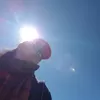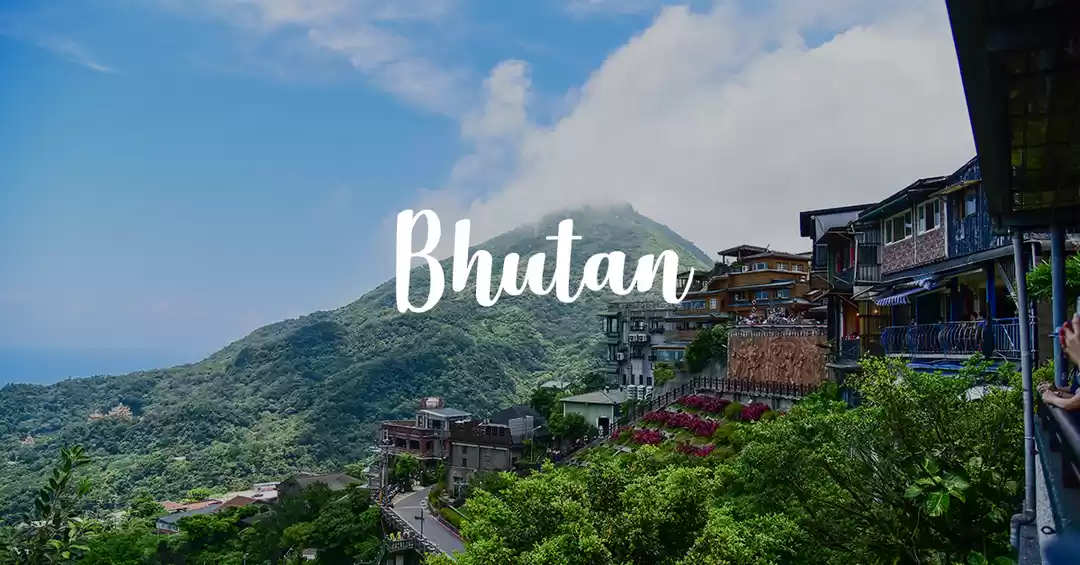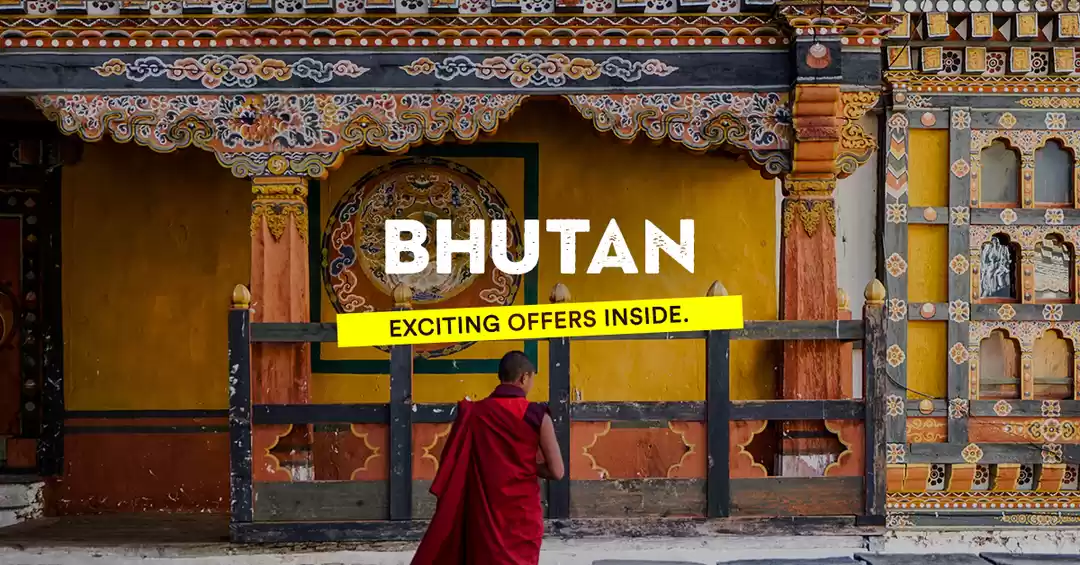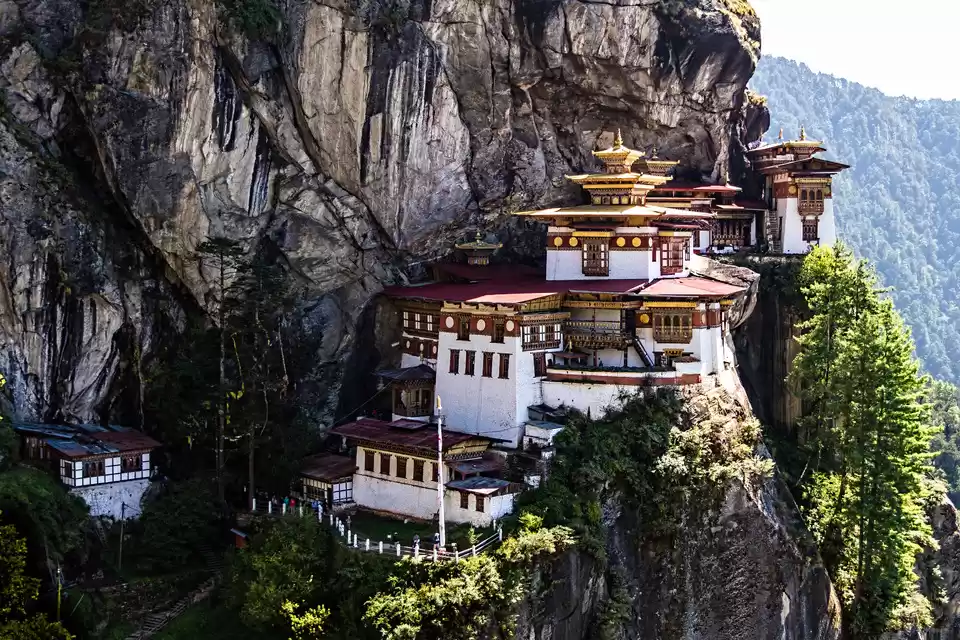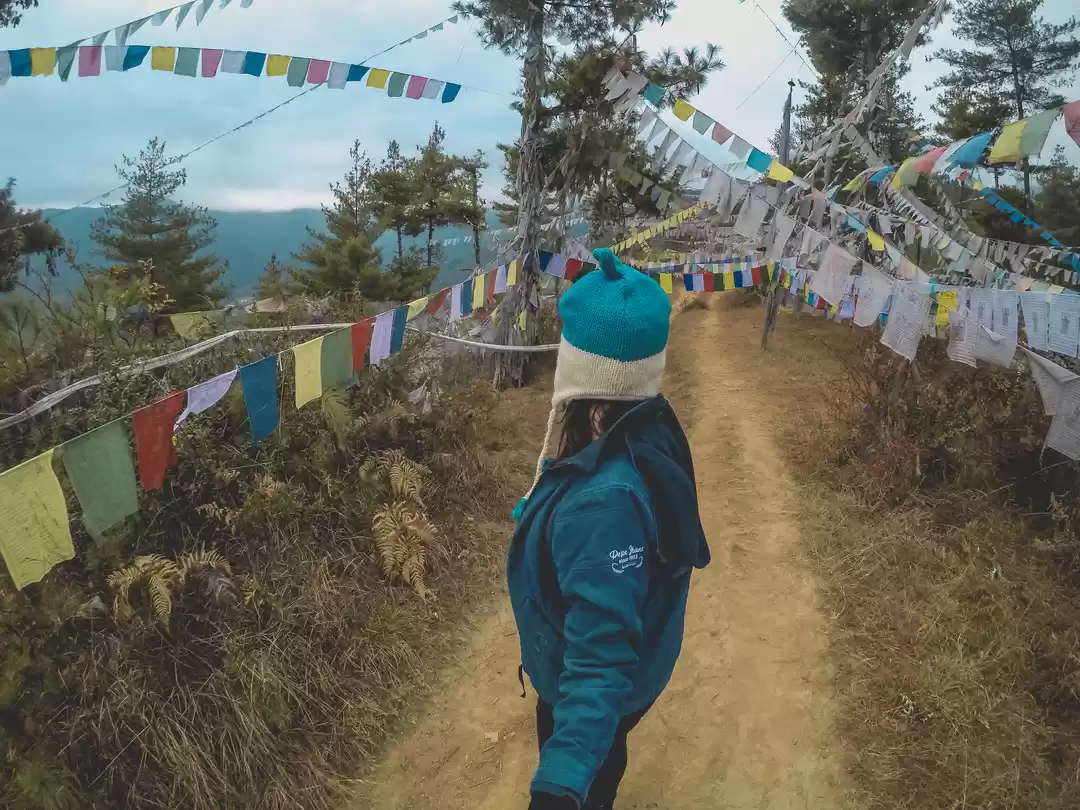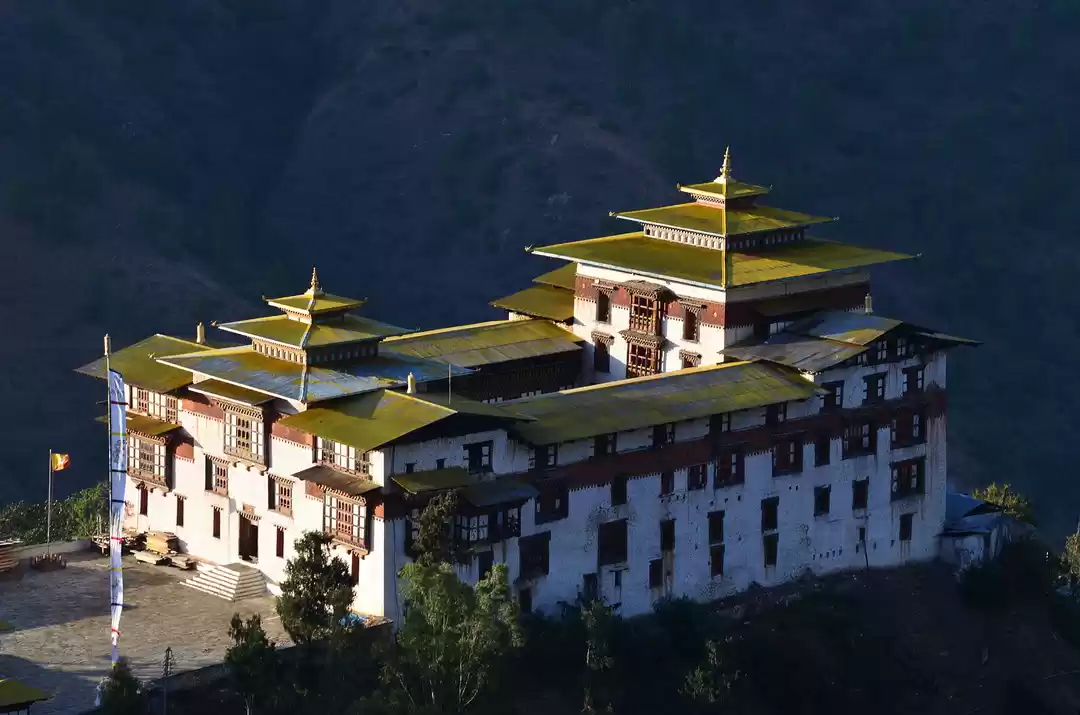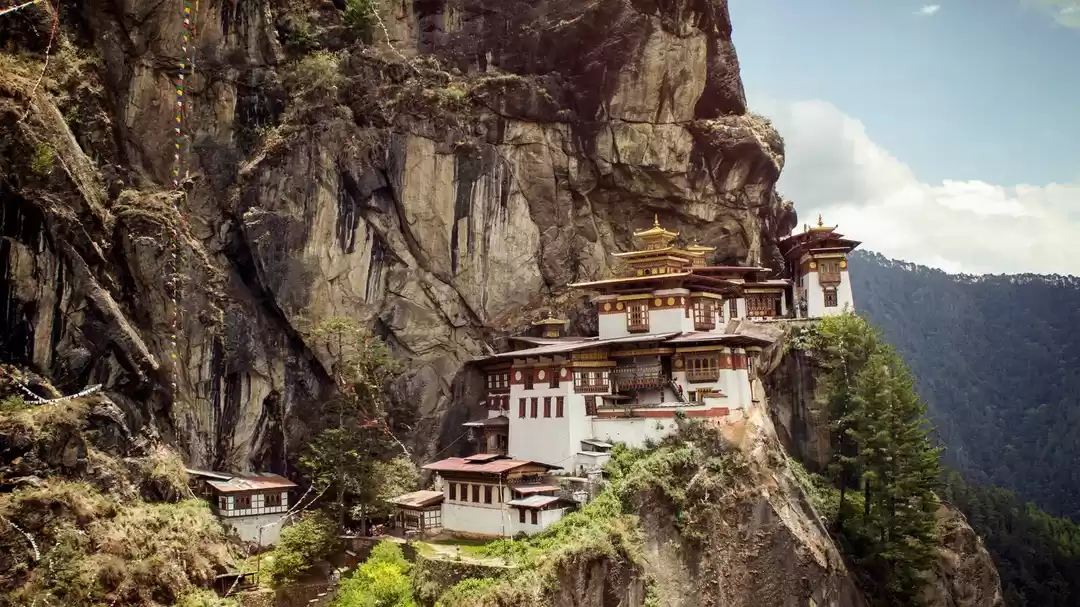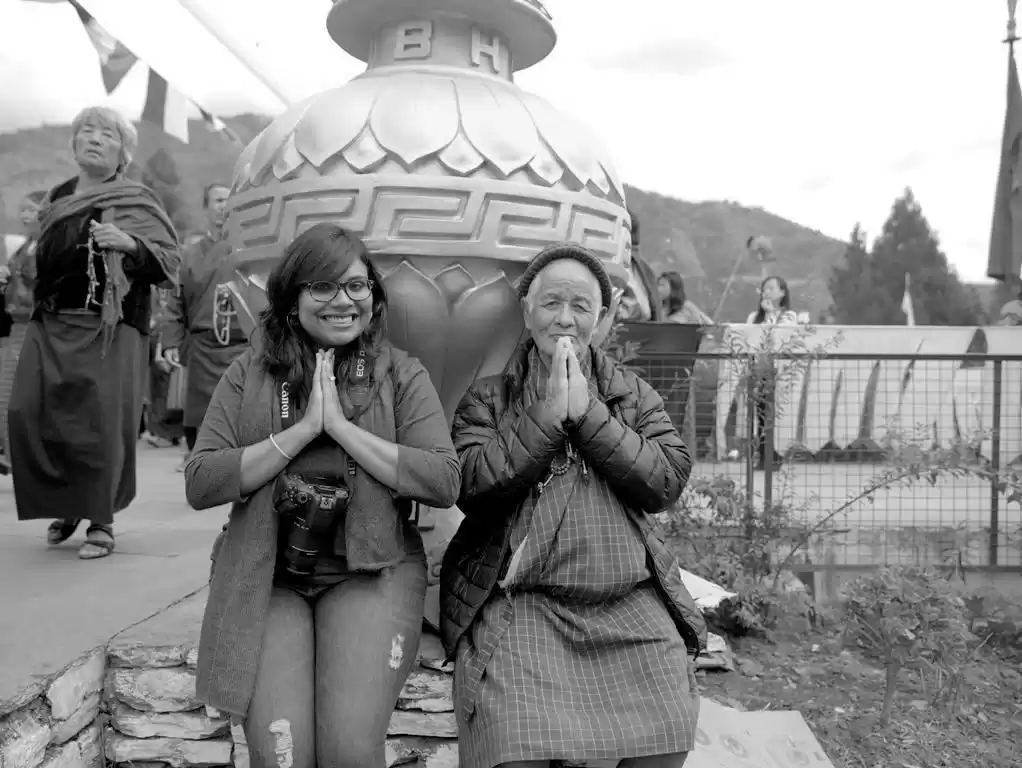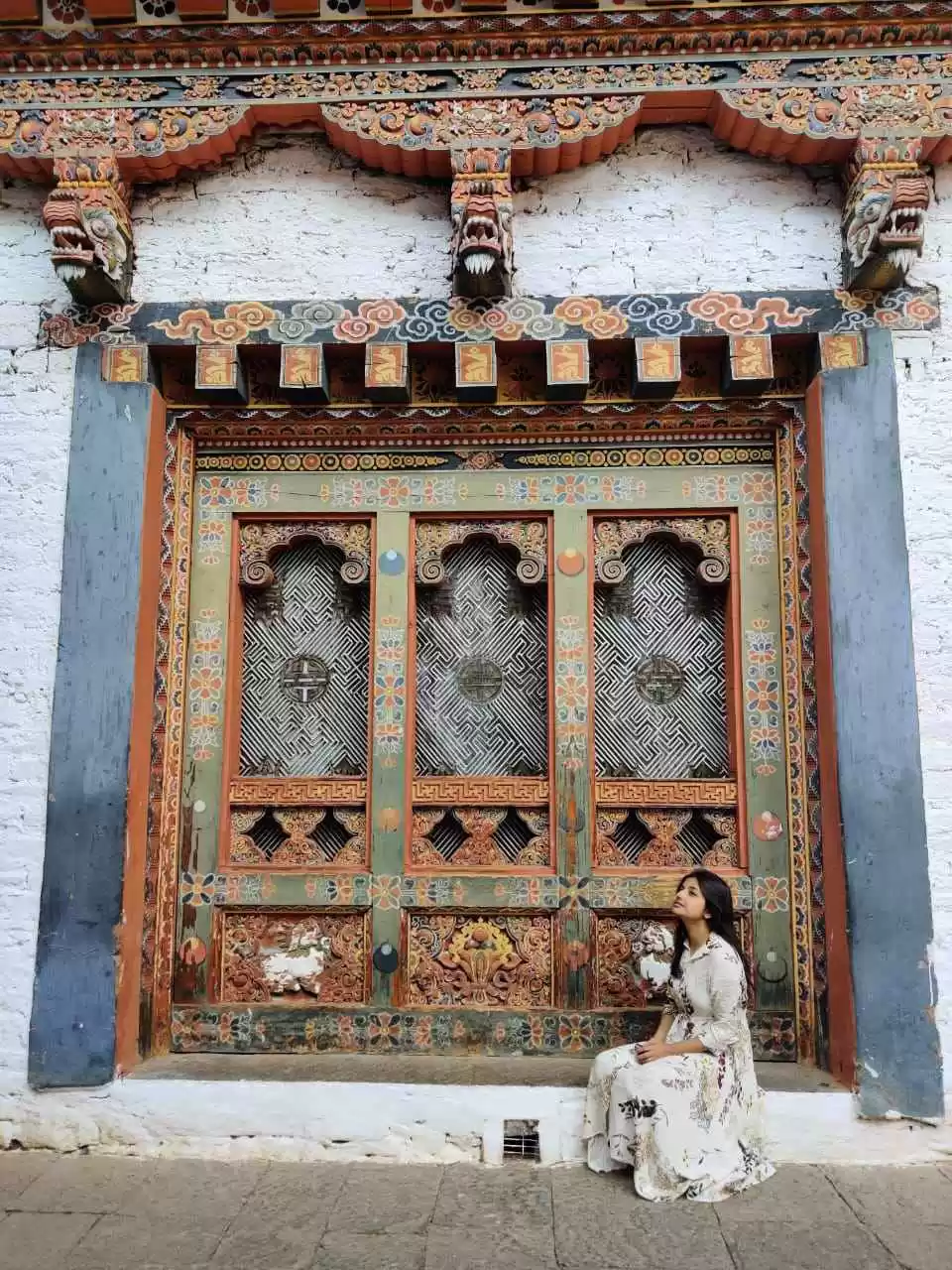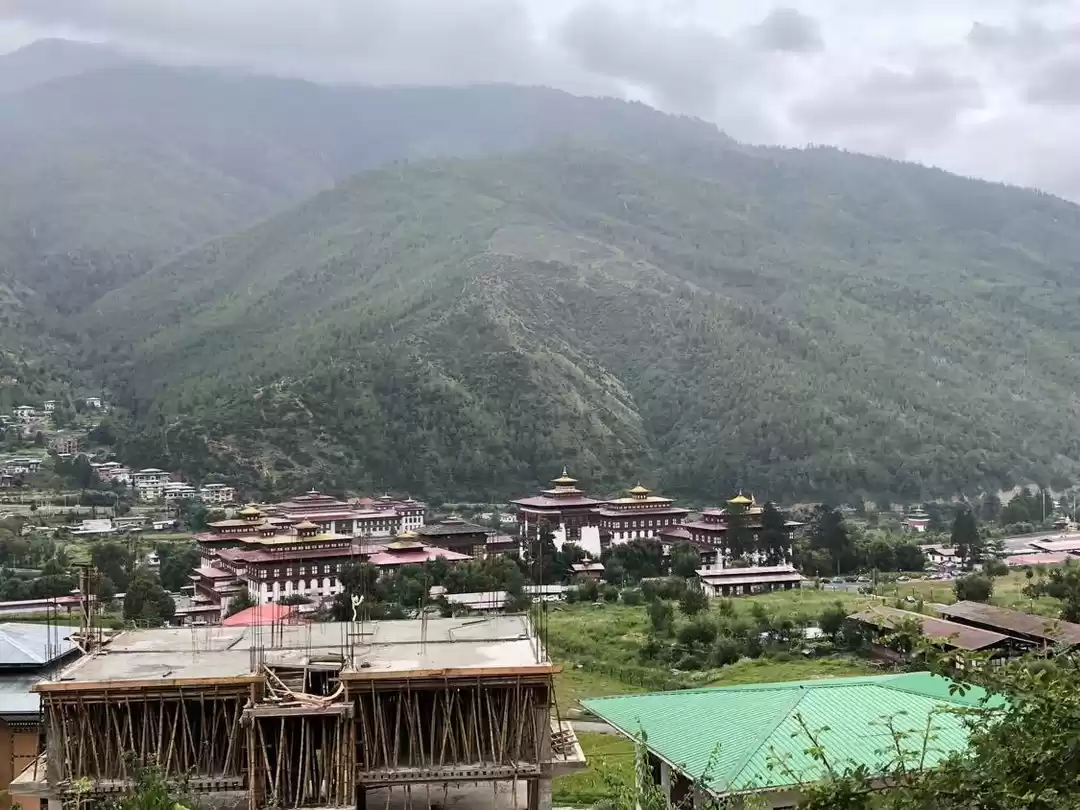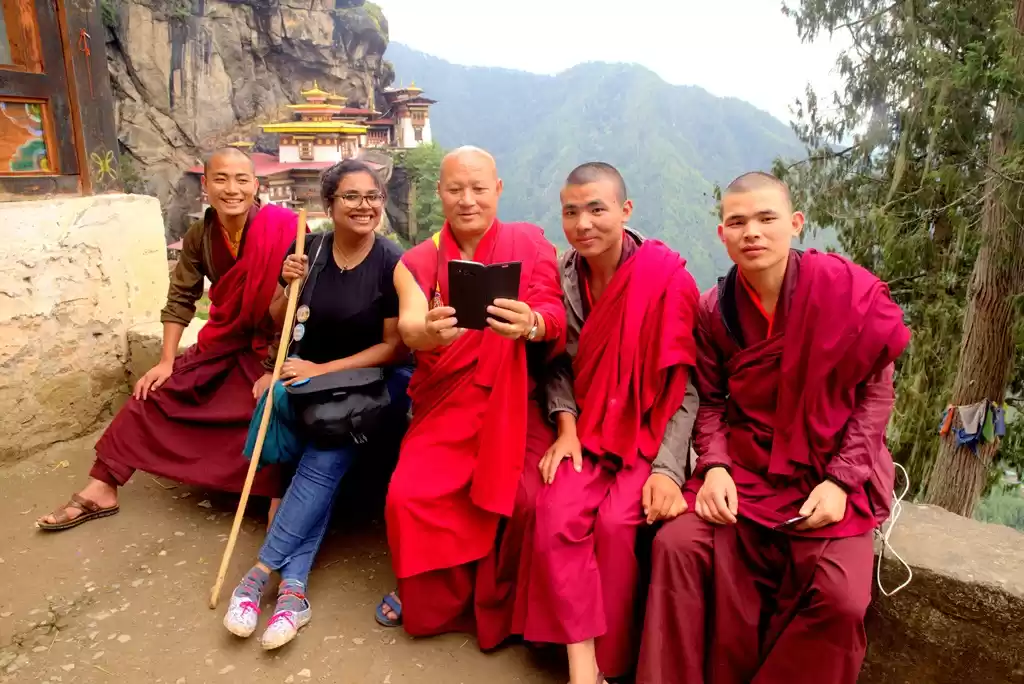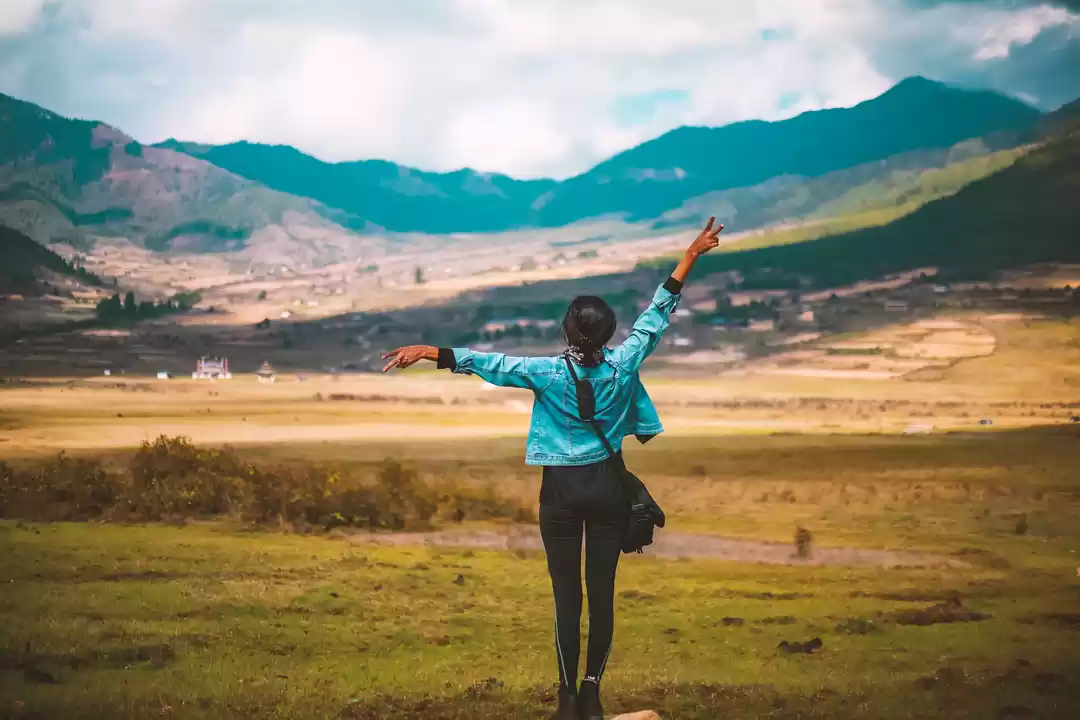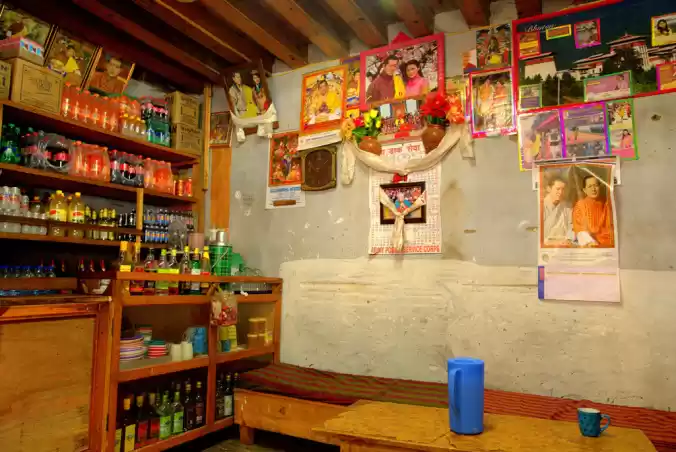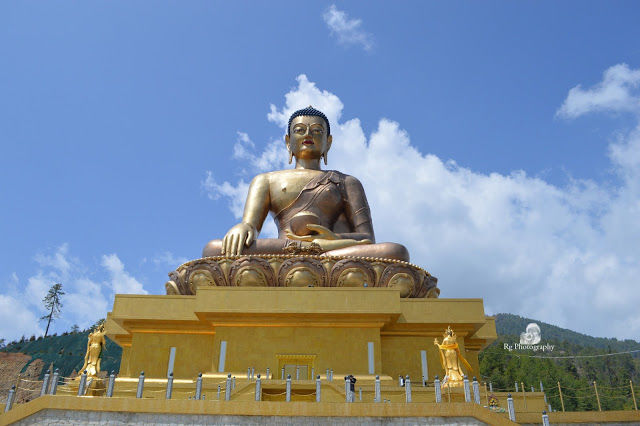
Personal Trip :
My trip to Bhutan was from 5th April - 11th April 2016. Had booked a package tour with Wowclub which esp arranges package tours for ladies. We were 20 ladies on the trip and a mini van was arranged for the tour.
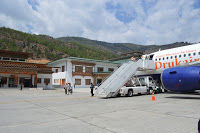
Paro is the airport. We landed and after the immigration and collection of our baggages, we were welcomed by our tour guide in a friendly way. From Paro we went to Thimpu, the Capital city of Bhutan. It was almost one and half hour journey. The way was very scenic, full of nature. We could see the prayer wheels, prayer flags,trees, mountains. Far from the noisy and polluting world..just hoping for a perfect holiday and a good time!
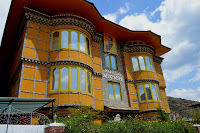
After lunch in a nearby hotel, we checked in Hotel Migmar. That day there was hailstorm and it was lashing out and all the programs for the day got postponed. After sometime, we all thought to take a walk on the roads and explore as the rains stopped.Took a local shared taxi and went to Town market where lots of shops were there. Spent time seeing all the shops and then came back to hotel.
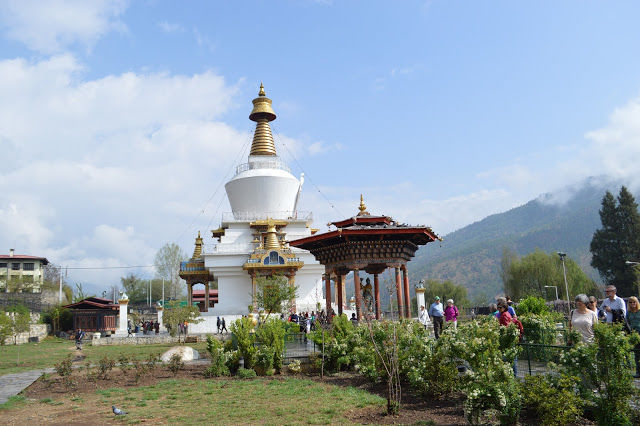
stupa (Dzongkha Day 2: Next day after breakfast we left for the sight seeing. First we went to the Memorial Chorten, Thimpu. This Stupa, also known as the Thimphu Chorten, is a chöten, cheten) in Thimphu, Bhutan, located on Doeboom Lam in the southern-central part of the city near the main roundabout and Indian military hospital. The stupa, built in 1974 to honor the third Druk Gyalpo, Jigme Dorji Wangchuck (1928-1972), is a prominent landmark in the city with its golden spires and bells.

This stupa is unlike others as it does not enshrine human remains. Only the Druk Gyalpo's photo in a ceremonial dress adorns a hall in the ground floor. When he was alive, Jigme Dorji wanted to build "a chorten to represent the mind of the Buddha"
We can also see prayer wheels near to this stupa. People keep chanting their mantra and spinning these prayer wheels.
Next we head to Budha Point. Buddha Dordenma is a gigantic Shakyamuni Buddha statue.This massive statue measures in at a height of 51.5 meters, making it one of the largest statues of Buddha in the world.
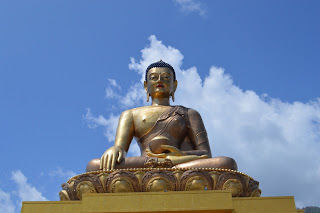
To break down the measurements, Buddha Dordenma's body and the lotus it is sitting on is about 138 feet tall, and the throne underneath is 66 feet tall. I had the opportunity to visit the statue twice during my travels in Bhutan. Driving the three-mile road, at a location 328 feet above Thimphu, not only was looking at the statue up close spectacular, but so was the view of the city and the surrounding landscape.
The statue is made of bronze and is gilded in gold. 125,000 smaller statues have been placed within this Dordenma statue, 100,000 8 inch tall and 25,000 12 inch tall statues respectively. Each of these thousands of Buddhas have also been cast in bronze and gilded. The throne that the Buddha sits upon is a large meditation hall.
Here is a list of some of the amazing amounts of Buddhist items that are to be placed inside Buddha Dordenma. Not only will a total of about 17 stories within the statue contain all these items, these items are "to benefit sentient beings."
*A 10-foot-tall sitting Buddha Shakyamuni, with two Disciples. *A 16-foot-tall Four-faced sitting Vairochana Buddha. *Seven 5-foot-tall sitting Reunion Buddhas. *Eight 5-foot-tall sitting Medicine Buddhas. *Eight 16-foot-tall standing Bodhisattvas, the miracle sons of Buddha Shakyamuni. *25,000 statues of a 12-inch Buddha Shakyamuni made of copper and gilded in gold, residing along the walls of mediation halls inside the throne. *100,000 statues of an 8-inch Buddha Shakyamuni, also made of copper and gilded in gold, filling up the lotus and Buddha Dordenma's body to the top. *On the ceilings, over 125 Major and Minor Mandala paintings, each measuring 15 by 15 square feet. *Paintings of the 12 main life events of Buddha Shakyamuni. And the list goes on. Furthermore, "each statue is filled with sacred relics, powerful mantras, and precious substances." And diamonds will be put between the eyebrows, for the Third Eye of Buddha Dordenma.
This is located atop a hill in Kuenselphodrang Nature park and overlooks the southern entrance to Thimpu valley. The statue fulfills an ancient prophecy dating back to the 8th century A,D that was discovered by Terton Pema Lingpa (Religious Treasure Discoverer) and is said to emanate an aura of peace and happiness to the entire world.
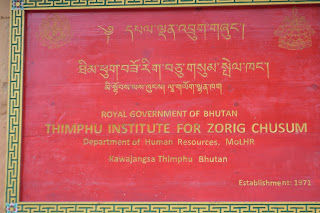
After this we went to the Thimpu Institute of Arts and crafts also known as the painting school.
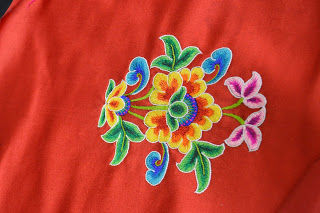
This institute, commonly known as 'the painting school', operates four- to six-year courses that provide instruction in Bhutan's 13 traditional arts. Students specialise in painting (furniture, thangkas - painted religious pictures, usually on canvas), woodcarving (masks, statues, bowls), embroidery (hangings, boots, clothes) or statue-making (clay). Most tour operators include a visit to the school in their sightseeing program. The institute's policy towards tourists is very friendly and you will be able to walk into classrooms and interact with the enthusiastic and responsive students in person. In fact, the establishment features on most tour operators' itineraries, and you can view the skill and focus of the young students, first-hand. There is a handicraft shop next door where handicrafts made by the students are sold- the perfect place to round off your visit.
There are also several handicraft shops nearby to accommodate your touristy quota of souvenir purchases and the whole place is quite the photographer's dreams as you can watch art being crafted before your very eyes in its various stages.
Folk Heritage Museum
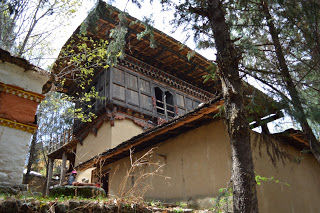
This restored three-storey, rammed-earth and timber building replicates a traditional farmhouse and is furnished as it would have been about a century ago. The museum gives you a glimpse of the traditional Bhutanese lifestyle, in addition to artifacts from rural households; it also displays an impressive collection of typical household objects, tools and equipment. The activities of the museum follow a seasonal rhythm, just like the activities of a true rural household, offering you something new to see every time you visit the place. The museum does a remarkable job of recapturing the rural setting and ambiance of a traditional household by setting up paddy, wheat and millet fields, a traditional water-mill with mill stones more than 150 years old, traditional style kitchen gardens with vegetables that were typically grown during the past 100 years and even one of the traditional hot stone baths that are famous throughout the country.
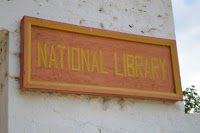
The National Library of Bhutan (NLB) (Dzongkha: Druk Gyelyong Pedzö), Thimphu, Bhutan was established in 1967 for the purpose of "preservation and promotion of the rich cultural and religious heritage" of Bhutan. It is located in the Kawajangtsa area of Thimphu, above the Royal Thimphu Golf Course, near the Bhutan Folk Heritage Museum and The National Institute for Zorig Chusum (Traditional Arts and Crafts).
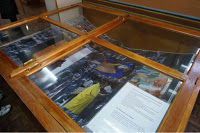
Main attraction is the largest book of the world. The winner of Guinness book of world records..."The Largest Published Book" (1.5M x 2M @ 60Kg in colour) and thousands of scrolls (teachings/scriptures from Buddha and teachings etc.) and a few historical, interesting photographs there isn't really much else to see. There are several floor levels to the library, but all resemble the same layout and content.
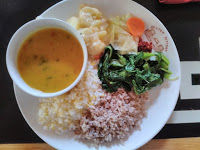

which is a traditional alcoholic beverage consumed in Lunch.. We had Bhutanese food. Red rice, white rice, dal, Gangtey Potatoes, boiled cabbage, beans, carrots, spinach and the yummy red chilli salsa. We also had a taste of Ara Bhutan. Ara is made from rice, maize, millet, or wheat, and may be either fermented or distilled.
Then we proceed to visit Weaving centre. The Gagyel Lhundrup Weaving Center is a private establishment in Bhutan's capital of Thimphu. It's a simple building with unfinished cement floors where a dozen women work quickly at their loom.
Changangkha Monastery
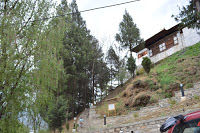

This popular fortress-like temple perched on a ridge above central Thimphu regularly hums with pilgrim activity. It was established in the 12th century on a site chosen by Lama Phajo Drukgom Shigpo, who came from Ralung in Tibet. La Khanga means place of worship,temple. We have to climb almost 300-350 stairs to reach the temple. Parents traditionally come here to get auspicious names for their newborns or blessings for their young children from the protector deity Tamdrin (to the left in the grilled inner sanctum, next to Chenresig)
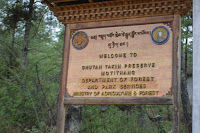
Takin preserve
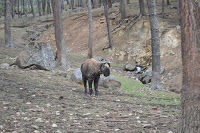
A Tibetan saint by the name Drukpa Kunley, popularly called by the epithet "The Divine Madman" is credited with creating the tamin with unique features. Drukpa Kunley, who was not only a religious preacher but also a proficient tantric, was requested by the people of Bhutan during one of his religious lectures to conjure a miracle before them. The saint agreed to do so provided he was fed for lunch, a whole cow and a whole goat. Once served, he devoured the food of both animals and left out the bones. He then took out the head of the goat and fixed it to the skeleton of the cow and uttered abracadabra and the magic worked. With a snap, he created a live animal, which had the head of the goat and the body of the cow. The animal sprang up and moved on to the meadows to graze. The animal was then given the name dong gyem tsey (takin). Since then this animal has been a common sight in the hills of Bhutan. Because of this magical creation with high religious connotation, the animal has been adopted as the national animal of Bhutan.
Paper factory
Paper quality depends on the species used. Daphne gives strong, dark paper, while paper from Edgeworthia is whiter and more fragile. Since all paper produced is durable and attractive, it is used for gift wrapping, greetings cards, prayer books and important deeds.
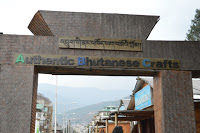
Authentic Bhutanese Crafts Bazaar Then we are left on a road where 80shops were there. Mainly for tourist. A spectacle of traditional bamboo huts, which were aligned neatly. The products in its 80 stalls cover all aspect of traditional Bhutanese art and craft synergized for contemporary use and market needs. Visitors will find an interesting assortment of genuine Bhutanese handicrafts and textiles available for sale here.
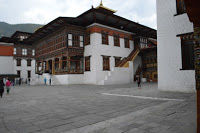
Tashichho Dzong, which houses the throne room of His Majesty the King.It is a Buddhist monastery and fortress on the northern edge of the city of Thimpu in Bhutan, on the western bank of the Wang Chu. It has traditionally been the seat of the Druk Desi (or "Dharma Raja"), the head of Bhutan's civil government, an office which has been combined with the kingship since the creation of the monarchy in 1907, and summer capital of the country. It was built by the first Dharma Raja, who also founded the Lho-drukpa sect of Buddhism, which has remained the distinctive sect of Bhutan. The correct transliteration of the vernacular name, Bkrashis-chhos-rdzong, meaning "the fortress of auspicious doctrine"-is, according to Dr. Graham Sandberg, Tashichhoidzong. The main structure of the whitewashed building is two-storied with three-storied towers at each of the four corners topped by triple-tiered golden roofs. There is also a large central tower.
The day ends lots of memories and lovely moments with the local Bhutanese kids.
Day 3: After breakfast, we left to Punakha via Dochula pass. The Dochula Pass is a mountain pass in the snow covered Himalayas within Bhutan on the road from Thimpu to Punakha where 108 memorial chortens or stupas known as "Druk Wangyal Chortens" have been built by Ashi Dorji Wangmo Wangchuk, the eldest Queen Mother. Apart from the chortens there is a monastery called the Druk Wangyal Lhakhang (temple), built in honour of the fourth Druk Gyalpo (head of the state of Bhutan), Jigme Singye Wangchuck; the open grounds in its front yard is a venue for the annual Dochula Druk Wangyel Festival.

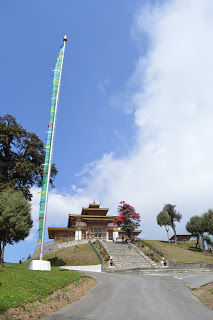
Dochula pass is located on the way to Punakha from Thimphu. The pass is a popular location among tourists as it offers a stunning 360 degree panoramic view of Himalayan mountain range. The view is especially scenic on clear, winter days with snowcapped mountains forming a majestic backdrop to the tranquility of the 108 chortens gracing the mountain pass. The pass is located at an elevation of 3,100 metres (10,200 ft) (3,140 metres (10,300 ft) and 3,150 metres (10,330 ft) are also mentioned) on the East West Road from Thimpu to Punakha and further east in the Himalayas amidst the Eastern Himalayan snow-covered mountains. The chortens are built in three layers, the first lowest level layer has forty five chortens, the second has thirty six and the top layer has twenty seven built around the main chorten.The construction of these chortens was done as per religiously ordained ritualistic procedures. As the height of the chortens attained 1 m a pit was excavated in ground in the centre, and symbolically offerings of grains and bronze utensil filled with butter were placed in the pit. At the next stage as the height of chortens increased, images of Buddhist gods made of clay stuffed with papers inscribed with prayers were interred. In the next stage, which is considered the "vital stage", in erecting a chorten was the fixing of the sokshing meaning "the life tree of the chorten". The sokshing, which is believed to provide a link between heaven and earth within a chorten, is in the form of a long square wooden pole made from a juniper tree made by an individual who has appropriate qualities from an astrological point of view. The pole was painted in red colour and inscribed with sacred hymns and banded with religious paraphernalia such as gilded images of gods, prayer bells, small clay stupas, and also precious stones and jewellery. The sokshing was then wrapped around by silk cloth and then fixed in the partly built chorten on an auspicious day.After completion of the chortens, building of a temple known as the Druk Wangyel Lhakhng, with the backdrop of "pristine" forest of the snow covered Himalayan mountains, was initiated and completed in June 2008. This was built as a memorial to celebrate 100 years of monarchy in Bhutan. Paintings on themes of Bhutanese history decorate the walls of the temple. Some of the murals are cartoonish. A few of the paintings relate to the fourth king fighting Indian rebels in the forest, monks with laptop, and a Druk Air plane. It appears like a "Bhutanese fusion of the 21st and 15th centuries"
Bhutanese families enjoy visiting the pass during holidays and weekends to picnic and simply enjoy the scenery. It is common to see families and groups of friends seated amongst the chortens, enjoying a packed lunch and hot tea. For tourists this is ideal location to capture beautiful pictures of Himalayan mountain range during clear, warm days.
Chimi Lhakhang, the temple of fertility
The Lhakhang is located 10 kilometres (6.2 mi) from Punakha near a village called Sopsokha from where a 20 minutes walk along muddy and dusty path through agricultural fields of mustards and rice, leads to a hillock where the monastery and the chorten are situated. Prayer flags are lined all along the road from the tiny village hamlet known as Yowakha, along a drain or stream to the monastery. All houses in the village have paintings of phalluses on their exterior walls. The lama Kunley had called the hillock where the monastery exists as the breast of a woman because of its round shape Chimi Lhakhang, also known as Chime Lhakhang or Monastery or temple, is a Buddhist monastery in Punakha District, Bhutan. Located near Lobesa, it stands on a round hillock and was built in 1499 by the 14th Drukpa hierarch, Ngawang Choegyel, after the site was blessed by the "Divine Madman" the maverick saint Drukpa Kunley (1455-1529) who built a chorten on the site.
In founding the site it is said that Lama Kunley subdued a demon of Dochu La with his "magic thunderbolt of wisdom" and trapped it in a rock at the location close to where the chorten now stands. He was known as the "Mad Saint" or "Divine Madman" for his unorthodox ways of teaching Buddhism by singing, humour and outrageous behaviour, which amounted to being bizarre, shocking and with sexual overtones. He is also the saint who advocated the use of phallus symbols as paintings on walls and as flying carved wooden phalluses on house tops at four corners of the eves. The monastery is the repository of the original wooden symbol of phallus that Kunley brought from Tibet. This wooden phallus is decorated with a silver handle and is used to bless people who visit the monastery on pilgrimage, particularly women seeking blessings to beget children.
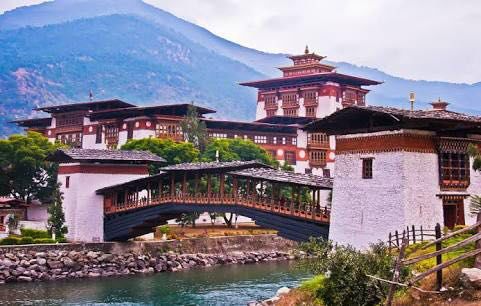
After lunch, we leave to Punakha Dzong, (The Palace of Great Bliss) was built in 1637 by the Zhabdrung. The Dzong is located at the confluence of the Pho Chhu (father) and Mo Chhu (mother) rivers in the Punakha-Wangdue valley.In view of the healthy climate in the region, Punakha is the winter capital of Bhutan. Administrative offices of the dzong, a very large, white-washed stupa and a bodhi tree are located in the first courtyard. This dzong was the second dzong to be built in Bhutan and it served as the capital and seat of government until Thimphu was promoted to the top job in the mid-1950s. It's arguably the most beautiful dzong in the country, especially in spring when the lilac-coloured jacaranda trees bring a lush sensuality to the dzong's characteristically towering whitewashed walls.
Elaborately painted gold, red and black carved woods add to the artistic lightness of touch. Guru Rinpoche foretold the construction of Punakha Dzong, predicting that '...a person named Namgyal will arrive at a hill that looks like an elephant'. When the Zhabdrung visited Punakha he chose the tip of the trunk of the sleeping elephant at the confluence of the Mo Chhu and Pho Chhu as the place to build a dzong. The gigantic Dzong was damaged 6 times by fire, once by flood and once by an earthquake.The spectacular Kuenrey (assembly hall) in Punakha Dzong is open to the tourists.
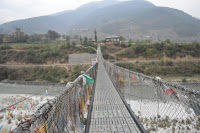
Then we drive to Punakha Suspension Bridge, which is known for the 2nd longest suspension bridge in Bhutan. The bridge is set very high on a fast mountain river. This suspension bridge connects the town of Punakha and the Punakha Dzong with the smaller villages surrounding the Punakha town. The view from the bridge is very stunning and spectacular. The prayer flags, the mountain, the river below and the monks bathing makes it unique. It is a short walk from the picturesque Punakha Dzong. The real adventure is walking across the bridge. At the high bridge, you can see the spectacular view of Punakha Dzong and Pho Chu river. Crossing the bridge, you can enjoy the normal life: the monks in their blazing red robes, the children frolicking back from school, the women-folk busy in their gossips. It is the long, narrow bridge so you should beware when crossing.
After the tiring day, we drive to hotel. The rest of the day goes in travelling and then relaxing after a hectic journey!
Day 4:
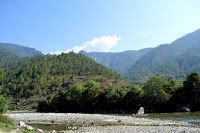
Next day after a leisure breakfast and enjoying the morning in the Punakha valley outside, we g0ahead to Khamsum Yulley Namgyal Chorten .
A 30-minute drive from the Punakha Dzong will bring you to the base of the hill on which this temple is built. From the car park, you have to cross a suspension bridge and walk through rice fields before you start climbing a moderately inclined trail surrounded by pine trees. It takes about 1 hour from the car park to hike up to the temple, and 30 minutes to hike down. During the summer, the walk could be a bit muddy, so be prepared. A hiking pole is recommended.
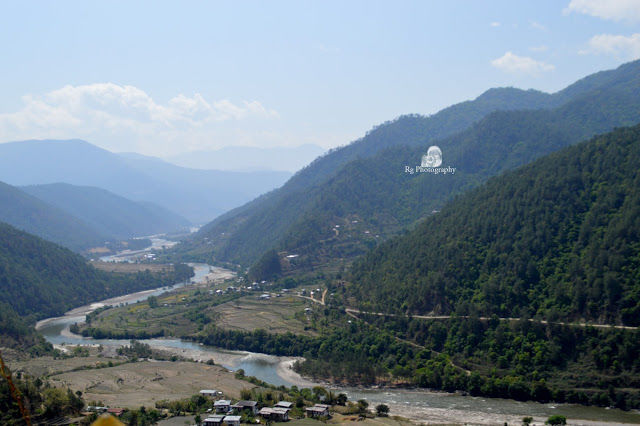
Khamsum Yulley Namgyal is a splendid example of Bhutan's fine architectural and artistic traditions and the only one of its kind in the world. The Three-level chorten is topped by a dome and a stack of 12 circular rings, then an umbrella, the sun, moon and finally a jeweled pinnacle. A road leads from a view point down to a parking lot by the river, where a bridge leads across to provide access to a footpath up to the chorten. This is also a put-in spot for rafting and kayaking on the Mo Chhu.
The best view of Punakha is enjoyed from the top of this temple. If the caretaker is convinced that you will not take pictures inside the temple, and only shoot out of the temple, you will be allowed to take your cameras. On the top floor, you can step outside. Enjoy the view.
Now, inside the temple what u find...
Most Buddhist temples, you walk in the front, there's open space where people sit to pray or meditate or study, and a big shrine in the back with a serene Sakyamuni Buddha. Here, walking in the north door, you are immediately face-to-multiple-faces with the multiplex wrath of Vajrakilaya, the most wrathful of protective deities. This is a huge sculpture, 15 or 20 feet high, filling the whole room and encased in glass. It's too big to grasp as one being; even the main heads are hard to see, being close to the ceiling and obscured by the dizzying detail of the various other manifestations. There are 103 complete 3-D sculptures, each an aspect of the deity and emerging bodily from his main mass, all in brilliant colors. And overwhelming in its presence. When we walk around, we see that the faces go in all directions. With heads everywhere, there is nowhere to hide; no enemy of the Dharma is going to get past this guardian.
When we have gotten our breath back, we are lead up a narrow stairway to the floor above. Here is another shrine room, and another wrathful deity statue, not as overwhelming in size and complexity, but still ferociously powerful. Here, however, there is room to sit and meditate.
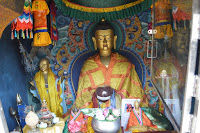
There is up another stair, to the third level. Here is a third wrathful deity, perhaps even more ferocious and energetic. In each of these temples, the walls are also covered with a series of responding deities. But here I notice that there are many more Yab-Yum figures, peaceful deities of all colors, each locked in embrace with their consorts.Finally, we climb up the third stairway, and emerge on the temple's roof! The view is fantastic. And here, at last, is a modestly-sized, classically-posed, golden Sakyamuni Buddha, facing southward toward the sun, peaceful and welcoming. Having survived all the transformational challenges of the wrathful deities, we are now able to be truly at peace. The outside world should see only this peace; the work of the guardians within can remain hidden. What an amazing experience!!
Next we drove to Sangchhen Dorji Lhuendrup Lhakhang Nunnery .. Perched on a ridge amid pine trees and overlooking valleys of Punakha and Wangduephodrang, gleams the magnificent structures of Sangchhen Dorji Lhuendrup Lhakhang(Temple). The temple houses a 14-foot main bronze statue of Avalokiteshvara (Chenrigzig chagtong chentong).
Other statues include those of Guru Padmasambawa, Gautama Buddha, Zhabdrung Ngawang Namgyel, Tsela Namsum, the 21 Taras and Tsepamay (Buddha of longevity). The Avalokiteshvara statue, one of the biggest in the country, was the handiwork of entirely local Bhutanese artisans. The temple complex also houses a permanent higher learning and meditation centre for nuns where, apart from religious trainings, it provides life skill training such as tailoring, embroidery, statue making and thangka painting.
This peaceful place, high above the Punakha valley with wide views over the river and the green hillsides, with the Stupa in white and gold against the clearblue sky - you might well call it divine.
Then we had been to River rafting. Though it was not the season for a very good raft, we enjoyed the beauty of the place. For almost an hour and half we had good time. We could see varieties of birds like kingfisher and then spotted a deer which came to drink water in the river. It was quite enjoyable ride in the water with few dashing spot in water.
Then drive back to hotel with lots of memories of the beautiful place of the day!!
Day 5: A long drive from Punakha to Paro via Dochula pass again. We halt at the pass and spend some time seeing the beauty. Unfortunately we were unable to see the Himalayan range due to climate.
Then we go to National Museum with an excellent collection of Bhutanese antiquities. A visit through the galleries shows the country's transition from the Stone Age to a modern Mahayanist Buddhist and multicultural kingdom with its cultural heritage intact. The Museum is designed with connoisseurs, students, scholars and tourists in mind, and seeks to provide each visitor with a rich and colourful experience. The National Museum performs an essential role as a preserver and promoter of Bhutanese cultural values.Preserving culture and cultural values is one of the Nine Domians of Gross National Happiness, the Bhutanese philosophy for national development.
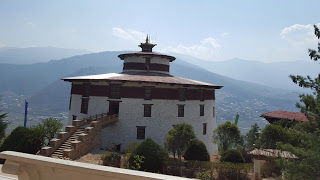
The Nine Domains are: Psychological Wellbeing Ecological diversity and Resislience Health Education Culture Living Standard Time use and balance Community VitalitY Good Goverence
Gross National Happiness is a unifying vision for Bhutan's five year planning process, and all major government initiatives comply with its principles. The Museum is proud to be at the center of serving the well-being and development of the Bhutanese people.
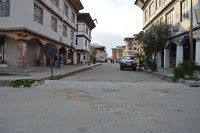
After lunch, we were left in the market for shopping. The markets of Bhutan are ethnic, traditional and loaded with stuffs that every traveller would love to bring home. The mementos and souvenirs are myriad in types, size and purpose.The market would cater to you in picking up whatever you feel like or your luggage space allows- from hand-woven fabrics, carved masks, woven baskets, thangkhas, wooden bowls, handmade paper to finely-crafted metal objects.Paro comes strong with Handicraft Emporium, Chencho Handicraft and Deki Dem shops. The art gallery shops are the places that might serve you with a one roof solution to your shopping spree in Bhutan.Traditionally dressed shop keepers and their simple gestures and genuine smiles make your stroll worth and happy.
Checked into hotel and had a good rest after dinner!
Day 6: The last day was very important as its the day for the main trek to Tigers nest which is also known as Taktsang Monastery in Paro.
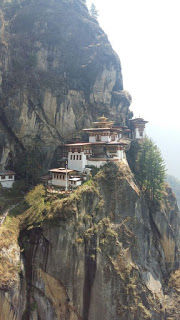
Guru Padmasambhava, popularly known as Guru Rinpoche visited and sanctified Bhutan in the 8th century when evil spirits abounded and harmed people.
Legend has it that Guru Rinpoche flew to this site on a tigress' back to subdue a local demon. Thereafter, he meditated here for three years, three months, three weeks, three days and three hours. Padmasambhava is credited with introducing Buddhism to Bhutan and is the tutelary deity of the country.
Taktshang Goemba or Tiger's Nest Monastery was blessed and sanctified as one of Bhutan's most sacred religious sites. It hangs on a cliff and stands above a beautiful forest of blue pine and rhododendrons.
It's a steep climb to Taktsang, a monastery hugging the side of a rocky cliff 3,000 feet above the Paro valley in Bhutan. But the going is fairly easy if taken slowly, for the path is well constructed and maintained and the mountain air is fresh and cool. It requires ascending a thousand steps or more, with plenty of opportunities to admire the view and to catch one's breath.
Tourists can enter the monastery as per these timings as long as your guide has arranged the standard permit in advance:
8 AM to 1 PM and 2-5 PM daily, October - March
Until 6 PM, April - September.
You have to register with the security at the entrance and deposit your bags and cameras.
Camera and Photography is not allowed inside the monastery.
No wonder, that when you are looking at the Taktsang Palphug monastery from Paro valley or from the bottom of the cliff, it seems almost impossible to reach the Monastery.
In fact, there are three paths leading to the holy place. The first path is a trail passing through the pine forest and decorated with bright, prayer bannerettes symbolizing protection from evil forces, positive energy, vitality and good luck. The other two paths are passing through the plateau, called "a hundred thousand fairies' plateau."
The refined architectural appearance of the Monastery is shaped in the best traditions of Buddhist. The complex has white buildings with golden roofs. Paro Taktsang Monastery consists of the 4 main temples and several dwellings.
All buildings are interconnected by staircases with steps carved into the rock. Almost every single buildings of the monastery complex has a balcony with a breathtaking view of the surrounding area. The main shrine of the monastery -the prayer wheel is located in the courtyard of the temple. Every morning at 4 a.m. it is being rotated by monks to mark the beginning of a new day.
The interior design of the temple impresses with its luxurious beauty: gold-plated dome and flickering lights that are illuminating golden idols. In the hall of Thousand Buddhas, which is carved into the rock, a large statue of a tiger is located. The tiger is respected as the symbol of Paro Taktsang because of the legend, according to which the location of the Monastery was chosen by a tigress. The tigress brought here on her back the founder of Bhutan's Buddhism guru Padmasmabhava.
There are eight caves in the monastery; four of them are comparatively easy to access. The cave where Padmasmabhava is believed to have entered first, on the back of the tiger, is known as "Tholu Phuk" cave and the one where he meditates is known as the "Pel Phuk". Monks of the monastery are supposed to live and meditate in these caves for 3 years. They rarely visit the adjacent Paro valley.
Optional place or another place to visit is Chelela pass:
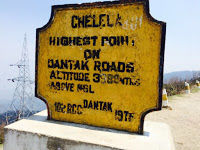
The 35km drive to cheli la makes an interesting road excursion and is an excellent jumping-off point for day walks. Chele la separates Haa and Paro valley and at 3810m, it is one of the highest motor able pass in Bhutan. The drive till here from either Paro or Haa is through dense spruce and larch forests according to the seasons. On a clear day, there are spectacular views of Mt. Jumolhari, Jichu Drake and adjoining peaks to the North West, as well as the view of Haa and Paro valley.
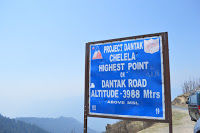
From the city's pinnacle, you can marvel at the stunning views of the surrounding mountains and valleys while watching the famous Himalayan yaks grazing in the distant horizon. Unfortunately, when we were there we couldnt see the mountain range as it was cloudy and foggy. But on the way back we could see the yaks. And the way was beautiful with colourful flowers.
Thus, ends our lovely trip to the beautiful Happy country Bhutan. With lots of memories we come back yet the hangover continues for sometime.
Few tips for the travellers...

